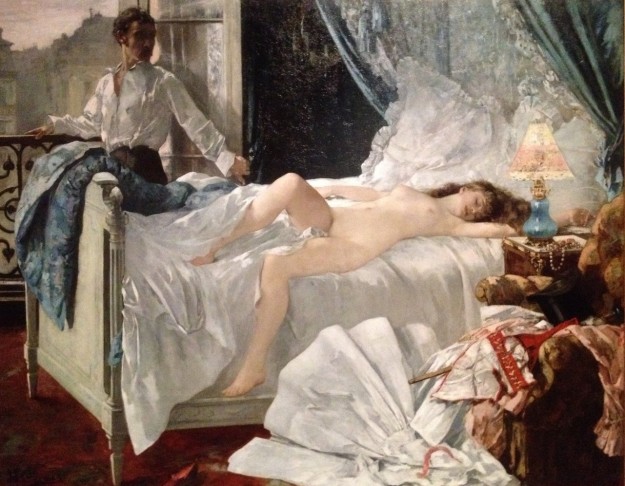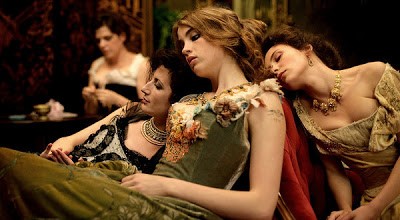
During my last days in Amsterdam, I visited the exhibition ‘Easy virtue’ at the Van Gogh Museum. The exhibition, which was first at view at the Musée d’Orsay, focuses on the 19th-century depiction of prostitution in France. Visiting the exhibition is a breathtaking experience, as you become completely immersed in the fascinating nightlife of late-19th century Paris.
Left: Woman with shawl or melancholy woman, Picasso – Right: Woman washing her hair, Walter Sickert
The exhibition reminded me of reading Gajto Gazdanov’s masterpiece Night roads, in which Gazdanov fictionalizes his experiences as a Russian immigrant nighttime taxi driver in Paris during the 1920s. But the immersive experience of the exhibition can even better be compared to what I felt after watching Bertrand Bonello’s beautiful film L’appolonide (2011).

Woman at the Champs-Elysées by night, Louis Anquetin
L’appolonide opens with a woman who tells of a dream in which she welcomes a man, after which his sperm, like thick white tears, is running down her eyes, over her red lips. The opening images set the tone of the film; it will be about longing and sorrow, deeply intertwined in their fatality. The film is set in a Parisian maison close at the end of the 19th century, but the link to the present is constantly made. This is done explicitly in the soundtrack and in the final scene including contemporary images. And yet, as one of the girls puts it: Ça a changé, ça change doucement. – Comment? – Ça change doucement, c’est tout. This theme of continuation and ‘soft’ change is underscored by the stylistic features of repetition and depicting rituals.
 Still from L’appolonide
Still from L’appolonide
The initial scene with the dream is followed by the opening credits, which are supported by a collage of superb black and white photographs, thereby paralleling the composition of the film: L’appolonide is a collage of fragments of the girls as individuals and of the girls as a group. Very often, the fragments that are shown are drowning in melancholia. A girl dies of syphilis, the other girls are humming, dancing and mourning – slowly. The masquerade, the fireworks we cannot see but only hear. Throughout the film, eyes are saying everything. A girl asks: if we don’t shine, who will lit up the night. Or how great cinema is always about life and about cinema.

